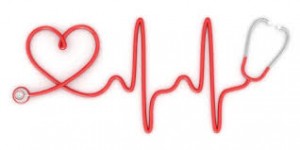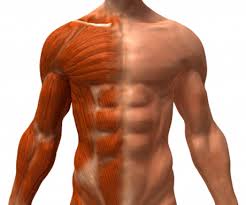 The anxious patient may exhibit hyperactive body movements or gestures, may have altered speech, and may demonstrate physiological manifestations, eg, palpitations, tachycardia, dyspnea, or profuse sweating—symptoms the physician can easily note. In the area of speech, some patients will display “pushed speech,” typified by accelerated rate and volume. In other anxious patients, muscles may close around the larynx and speech will be pinched, shaky, and feeble. Other anxiety-associated phenomena include fear of dying, a sense of impending doom, and occasional development of obsessions, compulsions, phobias, and ritualistic behavior. In milder forms, the obsessive COPD patient becomes excessively worried and ruminative about his disease state and various levels of functioning. Complaints of nervousness, faintness, rapid breathing, and inability to concentrate are common.
The anxious patient may exhibit hyperactive body movements or gestures, may have altered speech, and may demonstrate physiological manifestations, eg, palpitations, tachycardia, dyspnea, or profuse sweating—symptoms the physician can easily note. In the area of speech, some patients will display “pushed speech,” typified by accelerated rate and volume. In other anxious patients, muscles may close around the larynx and speech will be pinched, shaky, and feeble. Other anxiety-associated phenomena include fear of dying, a sense of impending doom, and occasional development of obsessions, compulsions, phobias, and ritualistic behavior. In milder forms, the obsessive COPD patient becomes excessively worried and ruminative about his disease state and various levels of functioning. Complaints of nervousness, faintness, rapid breathing, and inability to concentrate are common.
Of all the bodily symptoms that can afflict a patient, dyspnea is one of the most fearful. Since breathing is necessary for life, many patients respond with panic and feel that they may be dying as they gasp for air. Such fear tends to exacerbate the symptoms of dyspnea, and a vicious circle is created, often culminating in an episode of hyperventilation or hyperpnea. Many COPD patients do not feel they have control over either anxiety or dyspnea. Calm reassurance and a hand on the shoulder can do much to allay anxiety.
A number of physical and psychiatric methods are available for the reduction of anxiety and its manifestations. Immediate physical interventions for hyperventilation include having the patient lower his head below knee level and then slowly return his head to the upright position after lightheadedness or dizziness dissipates. Breathing into a paper or plastic bag may introduce sufficient CO2 into the bloodstream to create a relaxation response; however, the CO2 often diffuses out of the bag too readily for significant buildup. Further, this procedure would be contraindicated for patients prone to angina, since it lowers the supply of inspired oxygen. Psy-chopharmacologic treatment, one of the more common anxiety alleviators, will be dealt with in another paper concerned with psychoactive medications. Other methods of anxiety alleviation include breathing retraining, meditation, relaxation training, and biofeedback. It is possible to become calm due to tranquillizers of Canadian Health&Care Mall.
Breathing Retraining. For the patient with COPD, the retraining of breathing patterns is appropriate, since dyspnea is one of his greatest problems. Special breathing techniques have the advantage  that, once learned, they can be self-administered. They slow the rate of breathing, enhance breathing control, and create a heightened sense of calm and relaxation.
that, once learned, they can be self-administered. They slow the rate of breathing, enhance breathing control, and create a heightened sense of calm and relaxation.
The easiest breathing technique to learn is to count as one inhales and exhales. Most COPD patients with dyspnea will probably have inhalations and exhalations of 1 second or less. Their task would be to gradually increase the length of inhalations until they were inhaling to a count of two or three and exhaling to a count of three or four. The ultimate goal would be to attain a slow inhalation lasting from five to eight counts and an exhalation of 10 to 12 counts. This procedure is particularly appropriate for anxious patients and should be repeated for several minutes.
A more fundamental breathing retraining exercise, especially for relief of dyspnea, involves diaphragmatic breathing through pursed lips, with the patient bending forward at an angle of approximately 45°. This is described more fully by Hodgkin et al and Barach.
Meditation. Benson has greatly simplified the standard meditative approach used for centuries by the yogis in India. The individual selects a 20-minute period twice daily when he is completely free of interruption (preferably before or several hours after meals). Benson suggests that the individual sit or lie quietly, and with his eyes closed, repeat silently the mantra or chant, “Om, Om,” for the duration of the time. Some patients may object to the use of a mantra. The basic idea is that they use some method of driving interfering thoughts from the mind. This approach decreases heart rate, blood pressure, and oxygen consumption, and slows and regularizes breathing. An advantage of this approach is that it can be learned and practiced in the home without supervision. There are almost no contraindications for this arousal-reducing technique suggested by Canadian Health&Care Mall.
Relaxation Training. Relaxation training and biofeedback training are specially derived learning theory techniques. They are discussed apart from other behavioral procedures in view of their specific relevance for anxiety reduction. A number of variations are available, but the two broadest categories include the muscle flexion and suggestion approaches. In the former category, the patient is asked to contract and relax major muscle groups from the forehead to the feet. The most popular technique is that of Jacobson. In a typical exercise program, the individual is asked to contract and relax a given muscle group on signals provided by the therapist. For example:
“On the signal I give you, I want you to raise your shoulders as high as you can, as if to touch your shoulders to your ears. Okay, raise your shoulders, up, up, as high as you can, focus on the tension, hold it, hold it, feel the tension, now relax. Totally relax. Let yourself go. Feel the contrast between tension and relaxation. The back of your neck should feel tingly and warm, as though someone had massaged your neck and shoulders. Just relax (wait 5 to 10 seconds).
In this series of exercises, the therapist usually includes the following exercises: elevate eyebrows, squint eyes tighdy shut, clamp lips together, push tongue to the roof of the mouth, shrug shoulders,  lower chin to chest, flex biceps, clench fists, take a deep breath and hold it, tighten stomach muscles and buttocks, raise legs off floor, point toes back toward face, scrunch toes under in the shoes. Each exercise is repeated two or three times, with an increasing tendency to combine muscle groups over time.
lower chin to chest, flex biceps, clench fists, take a deep breath and hold it, tighten stomach muscles and buttocks, raise legs off floor, point toes back toward face, scrunch toes under in the shoes. Each exercise is repeated two or three times, with an increasing tendency to combine muscle groups over time.
For those patients who cannot exert much effort, the suggestion approach of Lazarus is recommended. It combines muscle flexion and suggestion techniques for relaxation. This procedure might be better suited to COPD patients since the requirements for exertion are less strenuous. The technique also pairs breath exhalations with relaxation-associated words (calm, peaceful, tranquil) because a greater state of relaxation is associated with exhalation than with inhalation supplied by Canadian Health&Care Mall.
Although relaxation procedures are effective in decreasing general tension and anxiety levels, they are not designed to combat specific fears or phobias. Many therapists require that the patient become skilled at relaxation procedures before densensitiza-tion is begun. During the days or weeks when the patient is learning to relax, an anxiety hierarchy is developed. This consists of making lists of fear-provoking items from least-to-greater anxiety. Tumage and Logan demonstrate a number of ways in which hierarchies can be used. The exact time and integration of relaxation and desensitization procedures are critical. Books on relaxation by Jacobson and Benson may be useful both to the physician and to some patients.
A caution with regard to the prescription of relaxation modalities should be noted here. Persons who operate under sustained tension or stress may be able to benefit considerably from learning appropriate relaxation exercises. However, it is just as important for the patient with COPD to learn techniques for enlarging his life and staying interested as it is for him to learn how to relax. In fact, the older a person gets (and COPD patients tend to be in the older age group), the more beneficial it is for him to be physically active within the limits of his personality, vitality, and life situation.
If a patients customary fast-paced behavior is not associated with symptoms, it may be most appropriate to leave the patient alone. The COPD patient who is lethargic, inactive, or relatively immobile should be encouraged to resume or maintain as many activities and interests as he or she can, or to develop new ones. The goal of relaxation exercises is to give the patient mastery over feelings of anxiety, agitation or fright, and enable him to more easily engage in useful, satisfying activities that give meaning to his existence. In this way, he can be helped to maintain interest and interaction with life and keep up needed medical treatment, including an appropriate regimen of graded physical conditioning exercises. The beneficial effects of physical exercise include a reversal of the process of muscular atrophy that generally takes place in persons obliged to be inactive because of dyspnea.
Biofeedback. Biofeedback is one of the newer approaches to relaxation and has a number of advantages. There are times when individuals fail to report anxiety or tension, yet display all the physiological concomitants. The voltage detectors, amplifiers, and filters of most current biofeedback devices can closely monitor and record such variables. More importantly, they can feed back these signals to the individual and teach him to modify them. If the individual is worrisome, ruminative, and seems to have trouble ‘letting go” or shutting off his thoughts, training in alpha brainwave control may be the treatment of choice. If muscle tension is the primary or a major symptom, electromyograph (EMG) biofeedback is a more likely choice. Blanchard and Young found that EMG muscle tension reduction is one of the most effective biofeedback approaches. More recently, headway has been made in the application of biofeedback to problems associated with pulmonary disease. Vachon and Rich have reported the successful use of biofeedback in the reduction of pulmonary resistance in asthmatics. The patient is provided with visual information telling him if resistance is increasing or decreasing. Although the authors directly measure pulmonary resistance, it is possible that simple techniques involving auditory feedback in the form of breath sounds may be effective in teaching patients to decrease resistance. Rather than choosing biofeedback over other techniques, the most effective approach is to combine biofeedback with other relaxation approaches.
The physician should be aware of ineffective devices marketed to the general public. For specific training in biofeedback technique application, the physician should contact an organized laboratory, preferably at a well-qualified university or foundation. If biofeedback equipment is used, the physician should follow closely the safety guidelines for use of equipment in hospital settings.
Other treatment recommendations of respiratory diseases see here:
- Researches of Chronic Obstructive Airway Disease Conducted by Canadian Health and Care Mall
- Canadian Health&Care Mall: The Main Drugs in the History of Canadian Pharmacy Mall
- Aortic Coarctation and Drugs of Canadian Health Care mall
- Preparations to the New Season. Assistance of Canadian Health&Care Mall
- Chronic Obstructive Airway Disease: Impact of Health Education
COPD